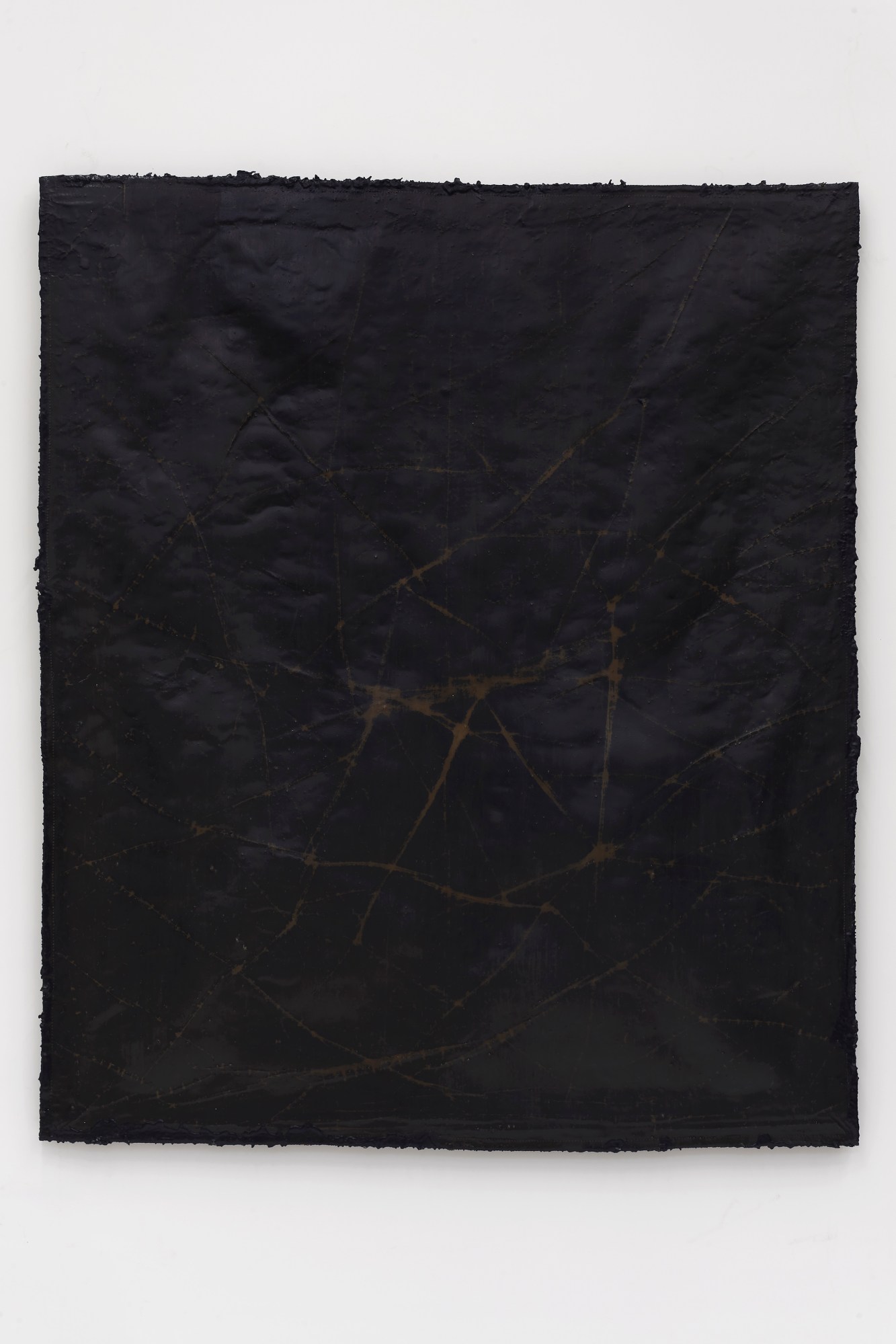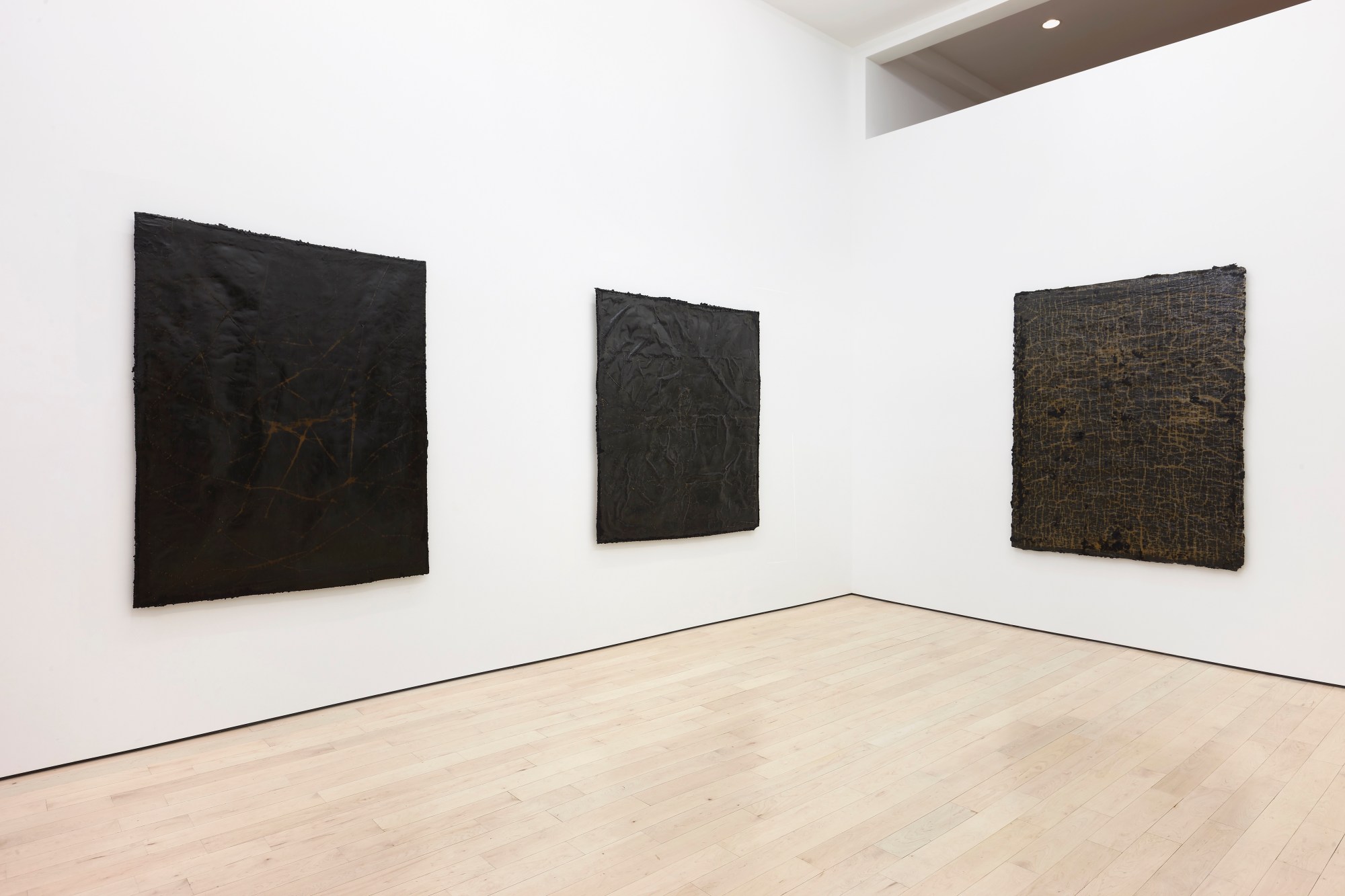Having walked away from his eponymous fashion label in 2005, Helmut Lang has spent the past decade and a half channeling his creativity into studio art. His art world debut came in the form of a voyeuristic mirror installation at The Journal Gallery back in 2007. Since his start at The Journal Gallery, Lang has been prolific with shows worldwide ranging from Alles Gleich Schwer in Hanover, Germany (2008), to solo exhibitions at his gallery Sperone Westwater in New York (2015 and 2017).
Lang’s exploration of materiality has evolved into a preoccupation with repurposing and transforming materials. When a fire in 2010 destroyed much of his fashion archive, Lang famously shredded the remains and used the scraps as materials for stalagmite-like sculptures that debuted at The Fireplace Project in East Hampton in 2011. Repurposing found materials later came in the form of a body of work shown at the Dallas Contemporary in 2016—tar coated sheepskin, wood, and paper sculptures—a more obvious transition from the minimalistic, androgynous designs that first revolutionized fashion in the 1990s.

In his new body of work, Lang delves into an exploration of connections. The series of wall mounted sculptures, six of which are on view, curiously enough, at The Journal Gallery once again, deploy the mesh of cotton canvas as sites of network building. Within that grid system, wax, resin, and tar are free to establish their own systems of interdependence, registering forms of differentiation, transformation, and erasure as they move through the canvas.
One of the central concerns in this body of work seems to be the archival of processes of transformation. What motivated this concern? Is it related at all to your own artistic “transformation” into studio art exclusively?
I was exploring the possibilities of networks we are made of or surrounded by, and then expressed them in an abstract matter. The transformation refers more to the process of how the pieces were made. They were created in an accumulative manner.
Although you moved away from fashion, your canvas pieces continue to allude to diverse life forms through themes of growth, transformation, and decay. Do you find there are more possibilities to reflect on the human condition and biological forms more widely through art?
I can explore the human condition without actually being concerned with the human body, which opens unlimited possibilities, even imagined human conditions.
What is your process of creation?
It is always difficult to know where to start and always a struggle to know where the right ending is. I guess the process starts mostly before that in ones head and then develops itself while I am working on the piece. I’m not aiming to know what the end result is in advance.

And you produce these works in your Long Island estate, which I imagine as a space of retreat and safety. Is there more solitude in your art practice than in your previous work as a designer? Do you find that comforting?
I work in Long Island because my studio is there, and yes, there is definitely more solitude in art practice. As the location is in a way not important, it is more about the headspace one is in. No part of the process is comforting until it comes to a satisfying outcome as there is always a process of accumulation, dismantling, reconfiguration and reconsideration involved to get there. Comfort would be distracting.
The Network series also seems to disavow the concept of time as linear, with different materials intermeshing and flowing within the grid system. Do you lose the notion of time when you are creating?
I do sometimes. I give every part of my work as much time as needed, and I also let it sit in the studio for quite some time after and get back to it whenever I feel like until I am sure I want to hand it over to the public.
Do you keep a diary?
No, I never had the urge to have one.
Materiality continues to be an integral part of your practice, particularly the use of rubber and now, with Networks, the mesh of cotton canvas. What motivates your exploration of texture and surface?
Texture and surface, but also content and proportions, are important in my work as I am interested to cross different disciplines. The final texture is basically the end result of all accumulations involved in the process.

Do you think about the state of contemporary art today? What do you think of the use of new media and digital art?
The making and experience of contemporary art today is in a constant search for evolution and transformation as many other disciplines are in our current climate. I think every experiment is allowed and should be explored.
Helmut Lang’s Network is on view at The Journal Gallery through September 20.
